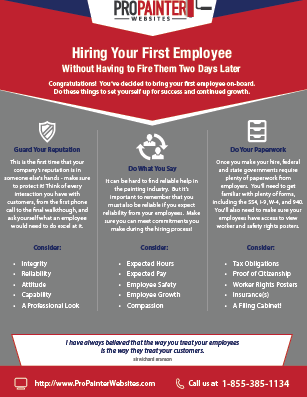The Value Of Climate In Commercial Outside Paint: What You Must Understand
The Value Of Climate In Commercial Outside Paint: What You Must Understand
Blog Article
Written By-McNamara Silver
When you're intending a business exterior painting project, do not undervalue the effect of climate on your results. You need to take into consideration elements like temperature, moisture, and precipitation, as they can make or break your paint job. As an example, did you understand that suitable conditions require specific temperature arrays and humidity degrees? Stopping working to keep track of these aspects can cause irregular coatings and even damages to fresh paint. Recognizing these aspects is essential to achieving a lasting, professional outcome. So, what specific climate condition should you watch out for?
Temperature Considerations
When it involves commercial exterior painting, temperature level plays a vital duty in the outcome of your task. If you're repainting in extreme heat, the paint can dry out too swiftly, bring about issues like poor attachment and unequal finishes. You want to aim for temperature levels in between 50 ° F and 85 ° F for the best outcomes. Below 50 ° F, paint might not treat properly, while above 85 ° F, you run the risk of blistering and cracking.
Timing your job with the appropriate temperatures is crucial. Start your job early in the morning or later on in the afternoon when it's cooler, especially during hot months.
Also, consider the surface temperature level; it can be substantially higher than the air temperature, particularly on warm days. Utilize a surface area thermometer to check this before you begin.
If temperatures are unforeseeable, watch on the weather prediction. Abrupt temperature drops or warm front can thwart your strategies. You do not wish to begin repainting just to have the problems change mid-project.
Humidity Degrees
Humidity degrees significantly influence the success of your commercial external painting job. When the humidity is too expensive, it can prevent paint drying and treating, causing a variety of concerns like inadequate adhesion and finish quality.
If you're intending a job throughout wet conditions, you might locate that the paint takes longer to dry, which can expand your task timeline and increase costs.
Alternatively, low humidity can additionally present obstacles. Paint might dry out as well promptly, avoiding proper application and causing an uneven surface.
Recommended Internet site 'll intend to keep track of the humidity degrees very closely to ensure you're working within the perfect array, typically between 40% and 70%.
To get Click On this site , think about making use of a hygrometer to measure humidity before starting your job.
If you find the levels are outside the optimum range, you may require to adjust your timetable or choose paints designed for variable problems.
Always consult the producer's standards for details recommendations on humidity resistance.
Rainfall Influence
Rain or snow can considerably disrupt your commercial outside painting strategies. When precipitation takes place, it can wash away newly applied paint or produce an unequal coating. Ideally, you want to pick days with completely dry weather to guarantee the paint adheres properly and remedies successfully. If you're captured in a rain shower, it's finest to halt the project and wait for problems to improve.
Furthermore, snow can be a lot more harmful. Not only does it create a wet surface area, but it can likewise lower temperature levels, making it difficult for paint to dry. This can lead to concerns like peeling off or blistering down the line.
It's crucial to check the weather prediction before starting your job. If rain or snow is forecasted, consider rescheduling.
Always bear in mind to permit sufficient drying out time between layers, especially if the weather condition continues to be uncertain.
Final thought
To conclude, keeping an eye on the weather condition is important for a successful industrial external paint job. By monitoring temperature, moisture, and precipitation, you can guarantee the best conditions for application and curing. Keep in mind to plan your work around favorable climate and always comply with producer guidelines. With the appropriate technique, you'll accomplish a lasting, beautiful coating that can stand up to the components. Do not let the weather condition catch you off guard-- remain notified and paint wise!
